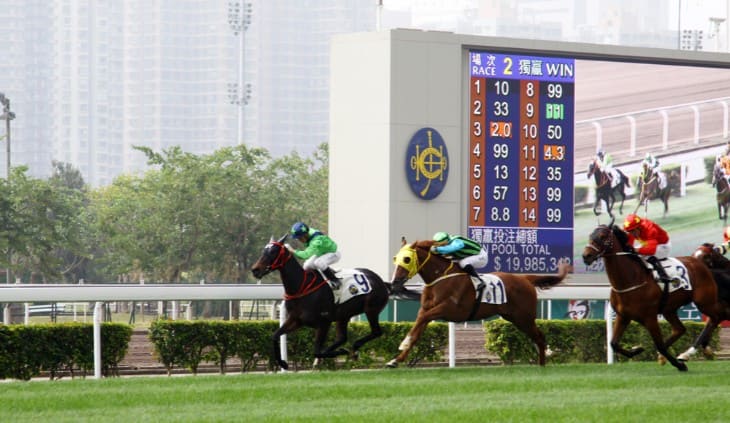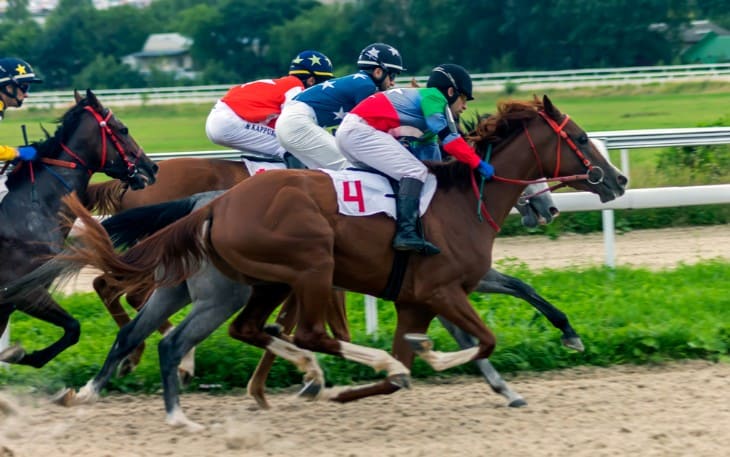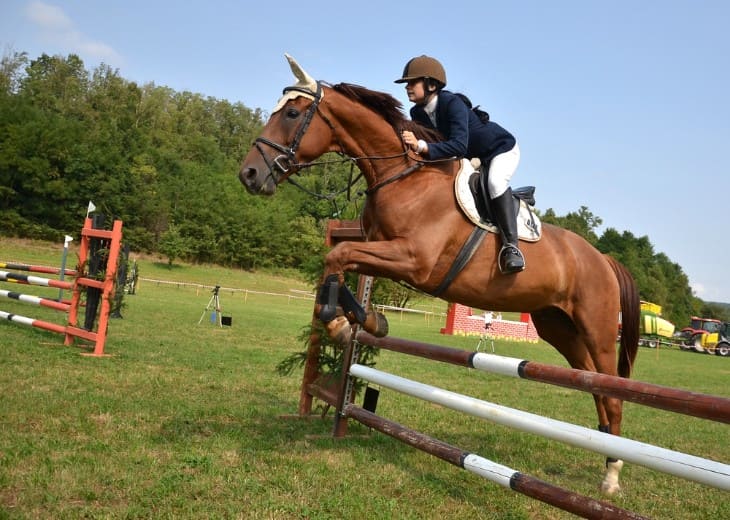Step into the heart-pounding world of horse racing, where every race kicks off with the electrifying moment when the gates swing open – the iconic 'bar' moment. In this thrilling spectacle, precision meets power as horses burst forth into the track, jockeys and steeds united in a quest for victory. But behind this adrenaline-fueled dash lies a meticulous process: the loading of horses, the Starter's Orders that set the stage, and the crucial act of opening the gates. It's not just a race; it's a symphony of strategy, speed, and fairness, where the 'bar' marks the beginning of dreams and the pursuit of glory.
What Does Bar Mean in Horse Racing?
In horse racing, a "bar" refers to a starting gate or barrier from which the horses begin the race. Horses are loaded into individual stalls within the starting gate, and when the race begins, the gates open simultaneously, releasing all the horses to start running. The starting gate is an essential part of organizing a fair and orderly race, ensuring that each horse has an equal opportunity to begin the race at the same time
Why is it so Important?
The starting gate is an essential component of horse racing as it standardizes the beginning of the race, eliminating the possibility of a horse getting an unfair head start. It also ensures the safety of both horses and jockeys by preventing chaotic and unpredictable starts.
Different races might have starting gates with varying capacities, accommodating a specific number of horses based on the race's requirements. Additionally, starting gate technology continues to evolve to enhance the safety and fairness of horse racing.
Are There Different Types of Bars in Horse Racing?
Now that we know what does bar means in horse racing, it’s also good to know they can vary. There are different types of starting gates used in horse racing, and the choice of gate depends on the specific requirements of the race, including the number of horses participating and the distance of the race.
The type of starting gate used is determined by the racing regulations and the infrastructure available at the specific racetrack. Ensuring a fair start for all horses is a priority in horse racing, and the choice of the appropriate starting gate is essential to achieve this goal. Let’s check the most common types of gates:
- Standard Starting Gate: This is the most common type of starting gate used in horse racing. It consists of individual stalls for each horse, ensuring that they are loaded securely before the race begins. The gates open simultaneously, allowing all horses to start the race at the same time.
- Auxiliary Gate: An auxiliary gate is an extension of the standard gate. It is used when there are more horses in a race than the standard gate can accommodate. The auxiliary gate is positioned alongside the main gate and opens simultaneously with it, allowing additional horses to start the race.
- Mobile Starting Gate: Mobile starting gates are mounted on trailers and can be transported to different racing venues. These gates are often used in temporary racing events or in areas where a permanent starting gate is not available. They function similarly to standard starting gates, providing a secure and fair start for the horses.
- Gateless Starts: In some cases, especially in smaller or informal races, a gateless start might be used. In gateless starts, horses line up behind a starting line, and the race begins with the drop of a flag or the sound of a horn. Gateless starts are less common in professional horse racing and are more typical in amateur or recreational events.
How Does it Work?
Now that we’ve learned what bars mean in horse racing, and that there are different types, let’s check how everything works with bars. Of course, it all starts with loading the horses. Then, it’s time for starter’s orders. After that, the gates are opened simultaneously, in order to ensure a fair start. After that, the race begins. Let’s take a more detailed, step-by-step look:

1. Loading the Horses
Loading the horses into the starting gate is a crucial and intricate process in horse racing, requiring precision and patience from the handlers and jockeys involved. As the race approaches, each horse is led by its handler to its designated stall at the starting gate. These stalls are designed to be secure, providing enough space for the horse to stand comfortably before the race. Once inside, experienced gate crew members assist the handlers and jockeys in positioning the horse correctly, ensuring it is calm and settled. It is vital for the horses to remain calm to prevent unnecessary stress or agitation, which could lead to a chaotic start. Handlers often use calming techniques and gentle reassurance to keep the horses relaxed, creating a conducive atmosphere for a successful start.
During this loading process, the gate crew pays close attention to the behaviour of each horse. Horses, being sensitive animals, can react differently to the confined space and the presence of other horses. Some may become nervous or fidgety, while others might be more composed. Gate handlers use their expertise to soothe the horses, helping them stand still and encouraging them to focus on the race. Jockeys also play a significant role in keeping their mounts calm, using their familiarity and bond with the horse to reassure them. Once all horses are settled and ready, the starter communicates with the gate crew, signalling that the loading process is complete. At this point, the gates are closed and latched, preparing the horses for the fair and simultaneous start of the race.
2. Starter's Orders
The "Starter's Orders" in horse racing refer to the commands and signals given by the starter, a trained official responsible for initiating the race. The starter plays a crucial role in ensuring that the race begins in a fair and orderly manner. Before giving the orders, the starter observes the horses, jockeys, and gate crew to ensure that everything is in readiness. They might look for signs of restlessness among the horses or assess if any jockey needs assistance. Once satisfied, the starter issues instructions to the jockeys, instructing them to prepare for the race. These instructions can include reminders to keep their horses calm, position them correctly within the stalls, and be prepared for the race to start.
Starter's Orders are typically communicated through a combination of verbal commands and hand signals. The starter might use a megaphone to ensure that all jockeys can hear the instructions clearly. They often employ consistent gestures and vocal cues, providing a standardized approach to every race. The starter's calm demeanour and clear communication are essential in keeping the jockeys and horses relaxed before the race begins, fostering a controlled environment that is conducive to a fair start. Once all horses are settled and ready, and the starter is assured of a level playing field, they initiate the opening of the gates, signalling the official commencement of the race.
3. Opening the Gates
"Opening the Gates" in horse racing marks the decisive moment when the race officially begins. After the horses have been loaded into their stalls and the starter has given the necessary instructions, the gates are opened simultaneously, releasing all the horses onto the track. The process of opening the gates is meticulously timed to ensure fairness. It requires precise coordination to guarantee that each horse starts the race at the same moment, eliminating any possibility of one horse gaining an unfair advantage. The gates swing open swiftly and smoothly, allowing the powerful, eager horses to burst out with explosive energy, setting the race into motion.
This moment is filled with anticipation and excitement, both for the spectators and the participants. The synchronized release of horses symbolizes the culmination of rigorous training, preparation, and strategy. For jockeys, it marks the beginning of their tactical race-riding, where they navigate their horses, vying for optimal positions and aiming for a strong start. Opening the gates is a testament to the precision and expertise of the gate crew and the starter, whose responsibility is not only to ensure an equitable start but also to guarantee the safety of both the horses and the riders. A successful gate opening sets the tone for the entire race, influencing the dynamics and outcomes as the horses thunder down the track, competing for victory.

4. Fair Start
A "fair start" in horse racing is paramount to maintain the integrity of the competition. It signifies that every horse has an equal opportunity to begin the race, ensuring a level playing field for all participants. Achieving a fair start involves several critical factors. First and foremost, it demands that all horses are released from the starting gate simultaneously. Even a slight delay for one horse could create a significant advantage or disadvantage, impacting the race's outcome. To prevent this, the gates are designed to open quickly and uniformly, ensuring that every horse starts running at precisely the same moment.
Additionally, a fair start means that each horse has an equal chance to establish its preferred position in the race. Horses have different running styles – some are front-runners, preferring to lead from the start, while others are closers, excelling in the later stages of the race. A fair start allows jockeys to employ their race-riding tactics effectively, enabling them to guide their horses into positions that maximize their strengths and strategies. If a horse is denied a fair start, it can lead to an unjust outcome, compromising the credibility of the race. Therefore, race officials and starters play a pivotal role in ensuring that the start of the race is not only timely but also equitable, upholding the principles of fairness and sportsmanship in horse racing competitions.
5. Race Begins
When the race begins in horse racing, it marks the electrifying moment when months of training, strategic planning, and anticipation culminate in a few heart-pounding seconds. As the gates swing open and the horses dash out onto the track, the thunderous sound of hooves and the determined shouts of jockeys fill the air. The race is a display of raw power, agility, and the bond between horse and rider. The initial moments are critical, as jockeys aim to establish their positions and find the most advantageous routes in the competitive field. Riders carefully balance their horses, urging them to accelerate while conserving energy for the duration of the race.
For spectators, the start of the race is a thrilling spectacle. It's a time of intense focus, as they eagerly watch the horses sprint away from the starting gate, each jockey vying for a strategic advantage. The race's unfolding dynamics are often shaped in these early seconds – horses jostle for position, jockeys make split-second decisions, and the atmosphere crackles with anticipation. The start sets the tone for the rest of the race, influencing the strategies that jockeys employ, whether they opt for an aggressive front-running approach or a patient, strategic ride to conserve energy for a late surge. Every race beginning is a unique narrative, filled with suspense, excitement, and the promise of fierce competition, making it a captivating moment for both participants and spectators alike.
Summary
In horse racing, the term "bar" refers to the starting gate or barrier from which horses begin a race. The starting gate is equipped with individual stalls for each horse, ensuring a fair and simultaneous start. Before the race begins, the horses are loaded into these stalls, and the starter gives instructions to jockeys, ensuring readiness and fair play. The gates open swiftly and uniformly, signifying the official start of the race. A fair start is essential, guaranteeing equal opportunities for all horses and setting the stage for the intense competition and strategic manoeuvres that unfold on the racetrack.
For more information:







